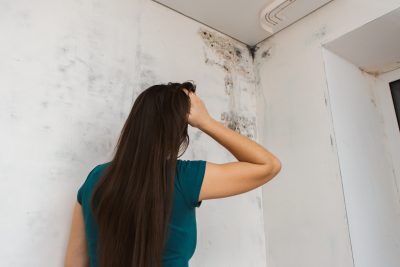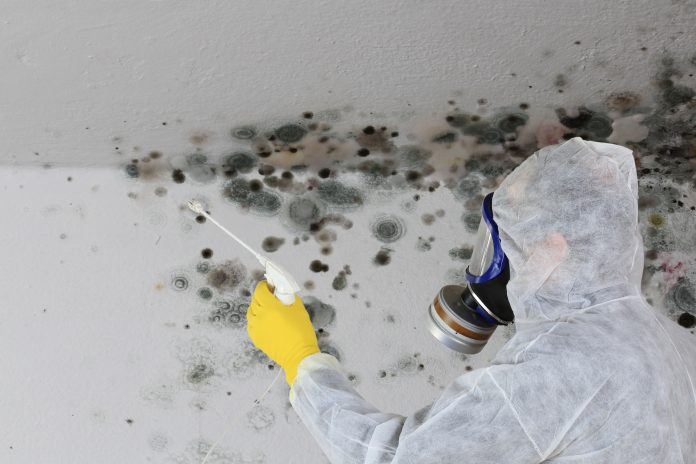Molds are types of fungi which occur naturally in the environment and thrive on moisture. It is ubiquitous both inside and outside the home and can be carried inside though shoes, bags, or anything moist. The organism then releases spores which travel through the air and will begin to grow if they find warm and damp conditions.
However, if you detect black or green mold in wood that looks slimy and appears soft and crumbling underneath, this may indicate a more serious problem that’s best handled by a professional mold remediation company, such as Pure Maintenance Cascades. Contractors with expertise in mold removal services use methods like dry fog technology, which destroy all mold cells without getting your home or office wet. These modern techniques are effective, affordable, fast, and non-invasive.
This article will help you detect the infestation of molds to prevent drastic damage to your house and avoid serious health problems. Read the tips below to learn the signs of mold problems that need immediate attention by professional mold remediation services. You Need To Hire Mold Removal Services-
1. Molds Spores are Visible
Generally, molds can be found in moist areas where fungi grow and thrive; it can take just 24-48 hours for molds to grow in wet surfaces. The most common spots for mold are in places like basements, cabinets, attics, behind furniture and appliances, and other cracks or crevices. Thus, it’s best to check these areas regularly for possible growth.
According to EPA, if mold has spread more than 10 square feet, consulting a mold removal specialist is highly recommended. Here are the visible characteristics of mold that you should be aware of:
Dark spots: Some people may not notice the early signs of mold due to its similarity to dirt. Take a closer look to ensure that the spot is mold. If the suspected patch is an odd color—usually dark—and the consistency is different from soil, then it may be mold. Soil is also typically loose, while mold spots appear more rounded and fixed in one place.
Strange colors and shades: Molds can be various shapes and colors. Some molds appear white and stringy, while others resemble clusters of spots. The color of mold can be impacted by humidity, light, and the material on which it grows, ranging from black to green, gray green and other colors in between. Below are some mold colors and their characteristics:
- Green: Green is the most generic color of mold, found frequently on walls in kitchens and bathrooms. Common forms of green mold include Aspergillus, Penicillium, and Cladosporium.
- White: White mold is known as Chaetomium and can be found anywhere, especially in damp and dark conditions, like basements and attics. This mold often looks like cotton and is one of the mustiest smelling.
- Pink: Pink mold is actually a type of bacteria, found commonly on bathroom walls, shower curtains, and bathtubs as it thrives on soap scum.
- Grey or Black: Grey or black mold is an outdoor mold found in dusty, damp spaces near plants and soil. Exposure to this kind of mold can resulted in an increased risk of asthma.
- Greenish-black: Greenish-black mold, from the genus Stachbotrys Chartarum, is perhaps the most notorious, and can grow on high-cellulose fibers like drywall and paper.
- Brown: Brown mold is common on leaves outdoors, and can grow on moist indoor surfaces, from walls to damp carpet.
- Orange: Orange mold is usually found outdoors but can grow on wooden structures inside the home. This kind of mold is usually different types of fungi growing together; they often present slimy when wet but fuzzy when dry.
It’s important to note that many experts, including the Centers for Disease Control and Prevention (CDC) believe that color is not necessarily an indication of how dangerous a mold may be. If you’re unsure, it may be best to hire professionals in mold remediation to remove any mold, before rectifying moist environments to prevent future growth.
2. Detecting a Musty and Damp Odor
Many mold infestations are identified by their distinct musty, damp, or otherwise strange odor —similar to the smell of old books. Much like its color, the odor of indoor molds can vary depending on the type of mold, the surface it thrives on, and the moisture source.
Furthermore, most mold odors are caused by microbial volatile organic compounds (mVOCs). These gases are naturally produced by molds as they grow. For instance, if part of a room suddenly adopts a strange or uncommon smell, there may be mold growing, even if you can’t see it. Here are the signs that homeowners should be aware of:
- Condensation on windows: Old properties are particularly susceptible to mold growth, as features like windows and walls may have defects. If your windows drip condensation on cold days, and you start to smell a musty odor, there may be mold growing as a result.
- The air conditioning system smells odd: Mold frequently grows in common areas near heating and air conditioning systems, largely due to the moisture present. Winter is one of the most prolific times for mold growth, as heaters pump out warm air into poorly ventilated rooms, creating an ideal environment for mold to thrive. If you notice the undesirable odor, it’s better to stop using your air conditioning unit until proper diagnosis and cleaning is done by professionals. Otherwise, you risk exposing your household to potentially hazardous mold.
Of course, an odor is only a preliminary way to identify mold. In many cases, mold is visible to the naked eye, so you should be able to see it, too. If you suspect you may have mold growth problems, it’s best to engage a professional for advice and assistance.
3. Feeling the Symptoms of Mold Exposure
Mycotoxins are toxic compounds naturally produced by fungi or molds. These substances can have adverse effects on respiratory health, particularly to those with pre-existing conditions such as asthma or allergies. Mold growth can exacerbate symptoms of these illnesses, putting sufferers at risk.
Some symptoms of mold exposure are:
- Cold, flu, or allergy-like symptoms
- Recurring cough, runny nose, congestion, or watery eyes
- Headaches
- Nosebleeds
- Itchy skin or rashes
- Fatigue
If people in your household have been experiencing these symptoms for some time, then the reason may be mold. You should hire a professional mold removal service for a complete inspection and, if necessary, remediation if an infestation is present. Consider factors such as training and experience when finding a mold inspector. When dealing with medical symptoms, it’s also crucial that you consult a doctor and provide information about the mold growth.
4. History of Flooding
Previous flooding in your house can be the cause of mold issues later, as surfaces may not dry. Dampness in basements, carpets, and walls provide favorable environments for mold to multiply and thrive. A mold problem can evolve from minor to major before you know it. So, if your property has a history of flooding, it’s best to have the place inspected for mold and obtain quotes for removal services.

5. Water Issues
Water issues such as plumbing leaks pose a high-risk of mold growth in places you may not think to check, such as behind cupboards or on covered sections of wall. Water damage can lead to the development of mold in less than 48 hours, and aside from wastage, slow and catastrophic leaks can lead to severe mold problems if left untreated.
Moreover, water can enter your home from outside or by dripping through basement floors. It’s important to fix water leaks whenever they arise and engage remediation services if you find mold. Even moisture in the air can be a source of dampness. During cold days, the air holds less moisture. Therefore, it condenses on cold surfaces and may encourage the growth of molds, such as on wooden ledges or window frames. To prevent molds in your home, here are some things to consider:
- Decrease the chance of mold spores by eliminating moisture
- Find and repair any water leaks
- Minimize indoor humidity to mold growth, such as by adding ventilation to moisture-generating sources like dryers and bathrooms
- Use dehumidifiers
- Use vent fans during cooking and cleaning
- Avoid carpeting areas where there may be moisture
Good housekeeping and proper ventilation coupled with the techniques above should inhibit the growth of molds in your house, however it pays to check your property regularly as a precaution.
If you discover sizeable mold growth, it’s important to consult a remediation specialist and obtain their expert advice to prevent undesirable property damage and the onset of health problems. Trustworthy contractors will provide safe removal, have good reviews from clients, and use non-toxic treatments with minimal impact to your property,
Conclusion:
A mold infestation in your home can typically be determined through visual inspection, the detection of a musty, uncommon odor, and changes in health conditions. Despite the obvious signs, if you’re unsure whether you have a mold growth problem, it may be best to engage a professional mold removal service, who can guide you in both the identification of mold and the remediation process.

















